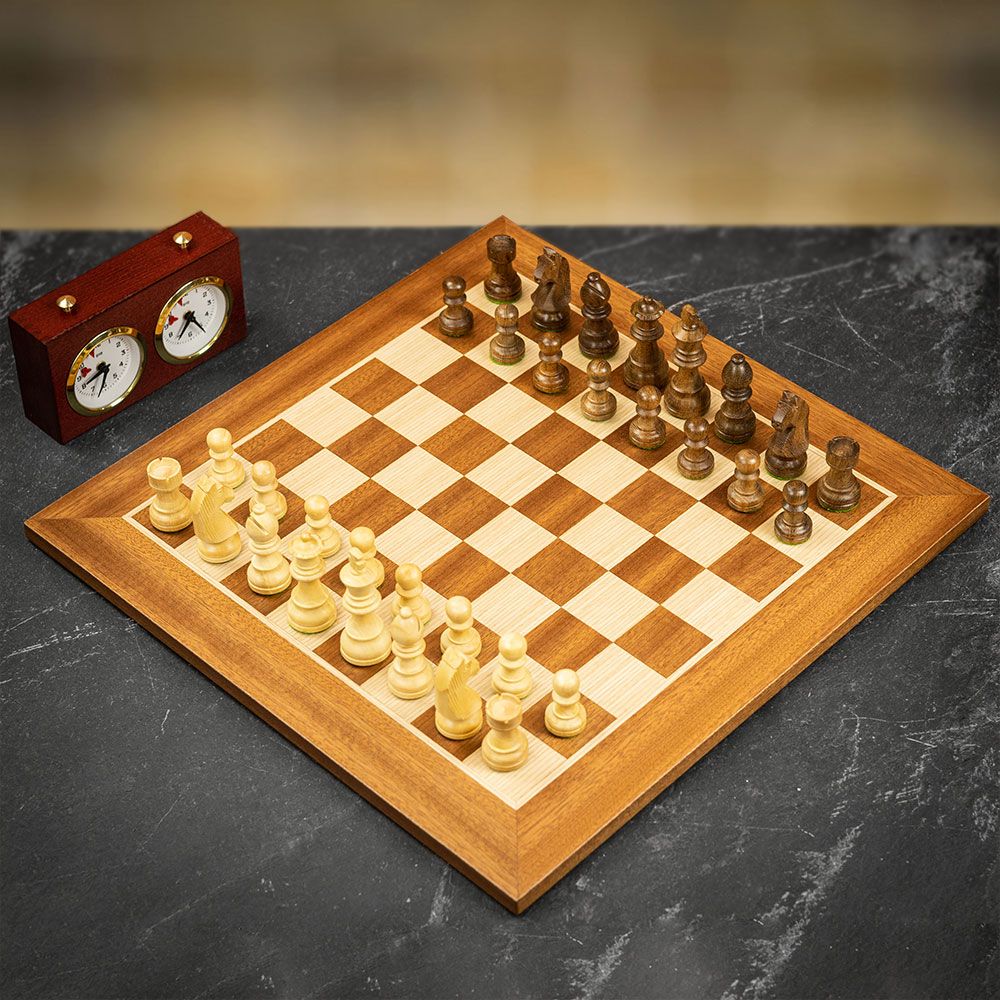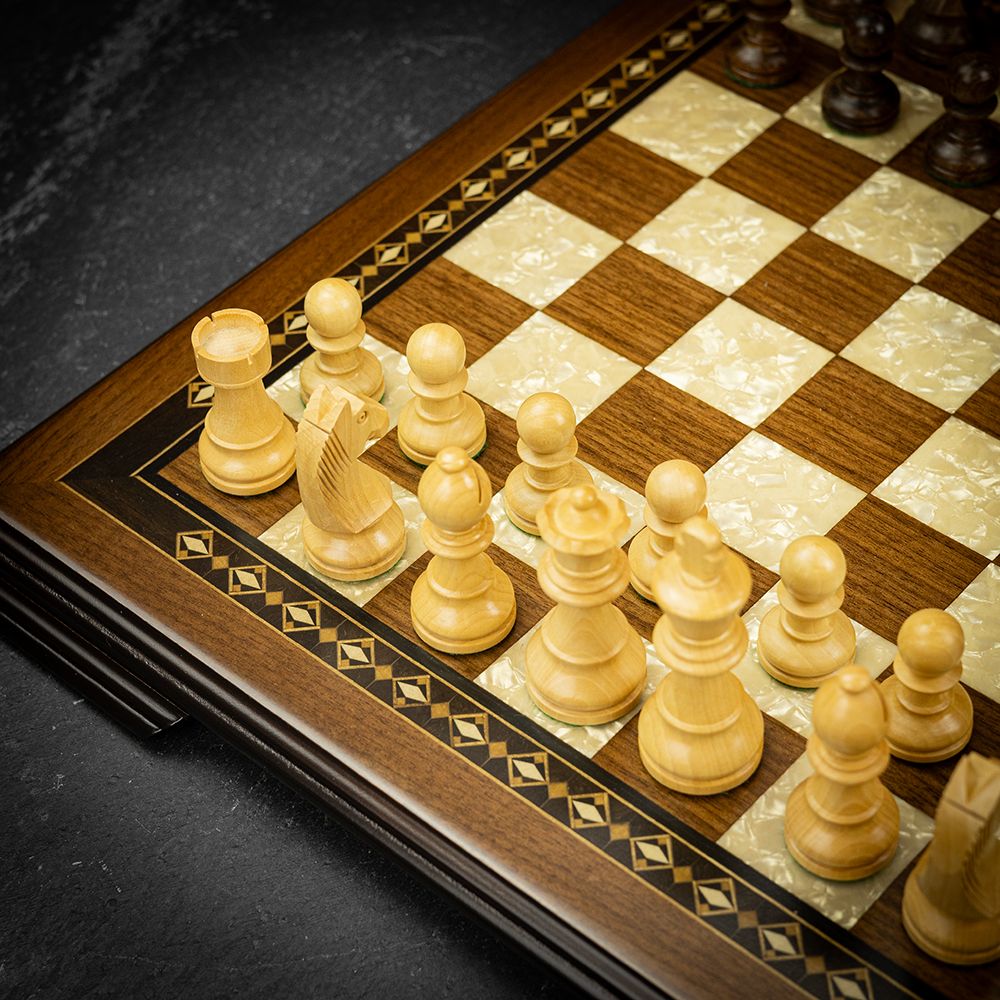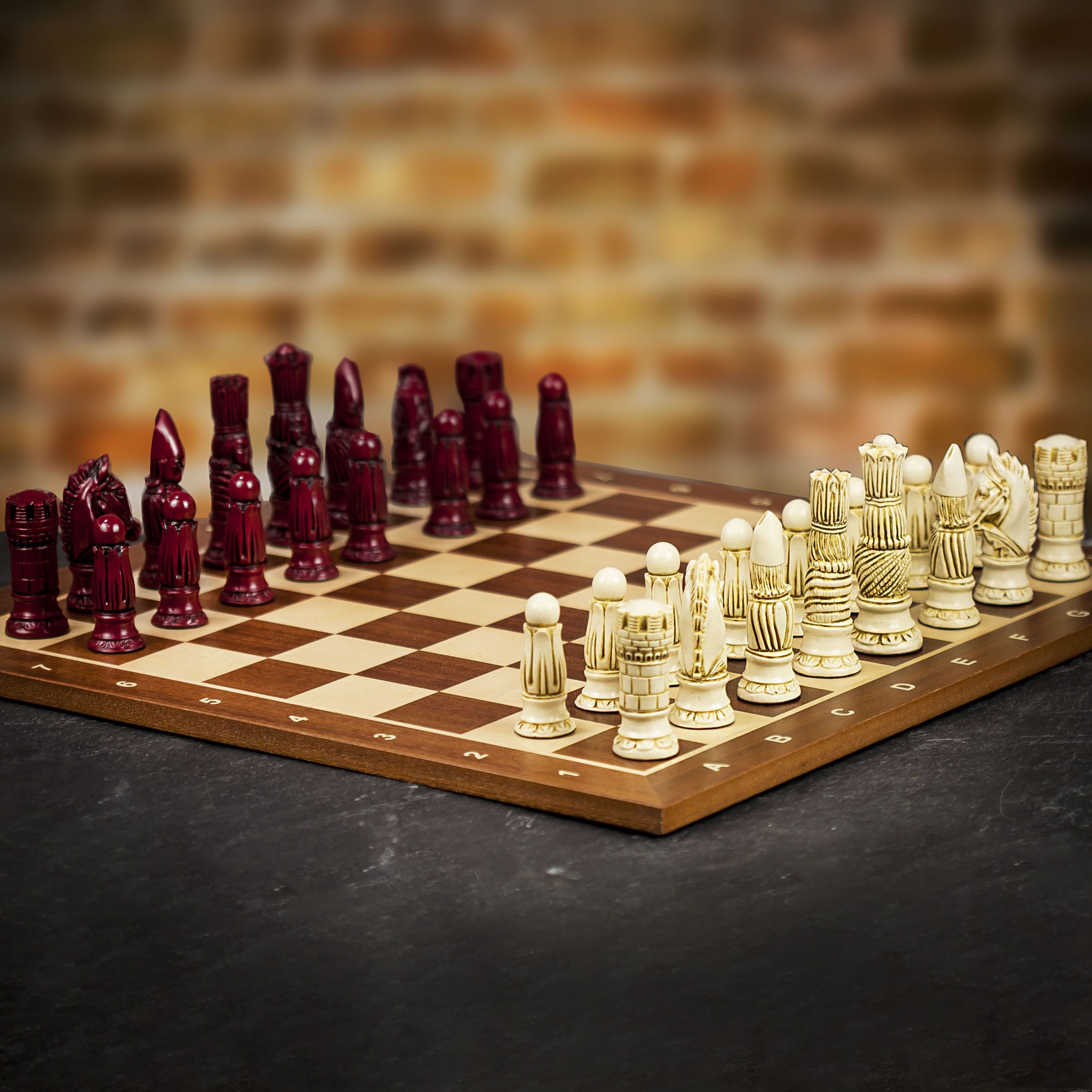Beginners Guide– Set Up and Rules of Play
Welcome to the world of kings, queens, knights and strategic play. The game of chess has been played and loved since its known origins around the 6th century, and has become a metaphor for dynamic strategy and intellectual prowess in the modern day.
Our beginners guide will walk you through the essentials of setting up a chessboard and help you to understand the rules of play.
Small Chess Sets


1. Setting Up the Chessboard
Position the Board - Before the first move is made, the stage must be set. Begin by placing the board between you and your opponent, ensuring that each player has a white square at their right-hand corner.
Pawns in the Frontline - Line up all eight pawns along the second row (rank) of the board, forming a protective barrier in front of the other pieces.
Powerful Backline - Arrange the remaining pieces symmetrically behind the pawns. The back row should read from left to right: Rook, Knight, Bishop, Queen, King, Bishop, Knight, Rook.
Chessboard Coordinates - Familiarise yourself with the chessboard co-ordinates - files (vertical columns labelled a-h) and ranks (horizontal rows labelled 1-8). This grid system is crucial for communicating moves.
Medium Chess Sets


2. The Chess Pieces: Navigating the Chess Battlefield
Understanding how each piece moves is fundamental to mastering chess. Here is a breakdown of the rules for each chess piece.
Pawn (P): Pawns move forward but capture diagonally. On their first move, pawns have the option to advance two squares. A pawn that advances all the way to the eighth rank is promoted to any other piece of the players choice (except a king). The player can choose to promote the pawn to a queen, rook, bishop or knight, regardless of which pieces have been captured earlier in the game.
The decision of which piece to promote the pawn to is crucial and depends on the strategic needs of the position. In most cases, players opt to promote the pawn to queen, as it is the most powerful piece on the chessboard. However, there are situations where promoting to a knight, rook or bishop may be strategically advantageous and a well-timed promotion can turn the tide of the game.
Rook (R): Rooks are depicted as a tower or fortress and is a piece with long-range movement capabilities. The rook can move horizontally or vertically across the board. It can move any number of vacant squares along a rank or file, in other words the rook's movement is unrestricted along the rows and columns of the chessboard and can traverse an entire length of a rank or file in a single move.
This capability give the rook significant range and makes it a powerful piece, particularly in open positions and endgames where its long-range movement can control key lines on the board.
Knight (N): Knights are a versatile piece and have a unique L-shaped move - two squares in one direction (either horizontally or vertically) and then once square perpendicular to the first part of the move. This movement allows the knight to 'jump' over other pieces, making it the only piece that can bypass intervening pieces on the board.
The value of the knight remains relatively stable throughout the game, unlike the pawn structure, which can change dramatically, or the bishops and rooks, which may become more powerful in open positions. The consistency makes the knight a reliable piece in various phases of the game.
Bishop (B): The Bishop is a powerful and dynamic piece with strength that lies in several key attributes. They move diagonally, staying on squares of the same colour throughout the game, showcasing their ability to control long diagonals on the chessboard.
Having both bishops on the board, commonly referred to as a 'bishop pair' can be strategically advantageous. The combination of a light-squared bishop and dark-squared bishop provides broad coverage across the board. They are also valuable defenders of the king in the endgame.
Queen (Q): The queen is the most powerful piece in chess, combining the moves of the rook and bishop, she can move horizontally, vertically or diagonally any number of squares. The queen is a potent attacking piece, capable of delivering checkmate on her own or in coordination with other pieces. She can also be a valuable defensive piece, guarding important squares and protecting the king.
The queen is a crucial piece in checkmating the opponent's king. She often plays a central role in delivering checkmate or setting up mating patterns in combination with other pieces.
King (K): The king has limited mobility, moving only one square in any direction. He is a unique and critical piece with his primary strength lying in his central role as the focal point of the game. The objective of a game of chess is to checkmate your opponent’s king. This goal serves as the cornerstone of the players position and strategic considerations. When a king is under threat of capture, it is said to be in check. If a player's king is in a position where it has no legal moves to escape check, it is checkmate, and the game ends.
In the endgame, with fewer pieces on the board, the king's role becomes more active. It can assist in advancing pawns, participating in checkmating patterns, and influencing the outcome of the game.
Large Chess Sets


3. Critical Chess Moves
Understanding an mastering these critical chess moves are essential for playing the game strategically and tactically. They contribute to the richness and complexity of chess, making each game a unique intellectual challenge.
Castling: This special move involves the king and one of the rooks. It is the only time two pieces move at once. Castling can only occur if neither piece involved has moved before, there are no pieces between them, and the king is not in check.
En Passant: If a pawn moves two squares forward from its starting position and lands beside an opponent's pawn, the opponent has the option to capture it as if it had moved only one square forward.
Pawn Promotion: As previously mentioned, when a pawn reaches the eighth rank, it is promoted to any other piece (except king) of the players choice. Most commonly, players choose to promote to a queen for its powerful moves.
Discovered Attack: Occurs when one piece moves, revealing an attack by another piece behind it. This can lead to gaining material advantage in a game.
Fork: This is a tactic where a single piece (usually a knight) attacks two or more opponent pieces simultaneously. This move forces the opponent to sacrifice one of the attacked pieces.
Pin: A pin is when a piece is unable to move because it would expose a more valuable piece to capture. It is a powerful strategic element, especially with the queen or rook.
Check: When the king is under direct threat of capture, it is in check. The player must make a move to remove the threat of check.
Checkmate: Checkmate occurs when the king is in check and there is no legal move for him to escape the threat. The game ends at this point and the player delivering checkmate wins.
Stalemate: This is a situation where a player has no legal moves and is not in check. In the case of stalemate, the game results in a draw.
X-Large Chess Sets


Our exquisite selection of chess sets from the very best European brands such as Manopoulos, Italfama, Helena, Rechapados Ferrer, Verma and more... caters to the needs of every discerning player. A curated collection showcasing the finest craftsmanship, quality and design, Farrar & Tanner has an unparralleled online offering.
From novices to seasoned Grandmasters, let the games begin...
Travel Chess Sets
Shop our chess brands here...
















